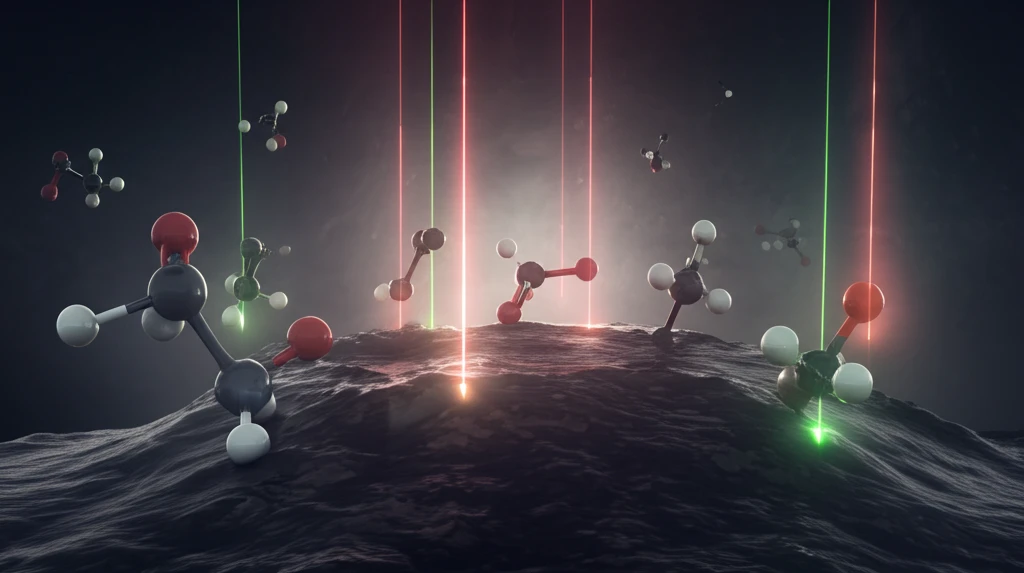
Unlock Chemical Reactions: How Vibrational Control Could Revolutionize Manufacturing
"Scientists achieve unprecedented control over methanol reactions, paving the way for more efficient and selective chemical processes."
For decades, chemists have dreamed of precisely controlling chemical reactions, tweaking the recipe to favor specific products. Achieving this has been a monumental challenge, like trying to conduct a symphony with inconsistent instruments. But what if you could fine-tune each molecule, ensuring they play their part perfectly?
That's the promise of vibrational control—and recent research has brought this dream closer to reality. A team of scientists has demonstrated, for the first time, the ability to alter the branching ratios in a multichannel reaction by selectively exciting specific vibrational modes. This means influencing which bonds break and form, leading to a desired outcome with unprecedented accuracy.
Their work, published in Nature Communications, focuses on the dissociative chemisorption of methanol on a copper surface. By using lasers to vibrate specific bonds within the methanol molecule, they were able to dramatically shift the reaction's outcome. This opens up exciting possibilities for designing chemical processes that are more efficient, selective, and environmentally friendly.
What is Vibrational Control and Why Does It Matter?

Imagine a molecule as a tiny mechanical device, with its atoms connected by springs representing chemical bonds. These 'springs' can vibrate at different frequencies, like the strings on a musical instrument. Vibrational control involves using external energy, often from lasers, to excite specific vibrations within a molecule.
- Increased Efficiency: Fewer wasted reactants, meaning lower costs.
- Higher Selectivity: Target specific products with greater accuracy.
- Reduced Waste: Minimize unwanted byproducts for cleaner processes.
- Novel Reactions: Potentially enable reactions that are otherwise impossible.
The Future of Chemical Control
This research provides a critical step towards realizing the full potential of vibrational control. While the current study focuses on a specific reaction (methanol on copper), the principles are applicable to a wide range of chemical processes. As laser technology advances and our understanding of molecular dynamics deepens, we can expect even more sophisticated methods for manipulating chemical reactions. This breakthrough promises a future where chemical manufacturing is cleaner, more efficient, and exquisitely tailored to meet our needs. It's a future where chemistry is not just a science, but a form of artful creation.
